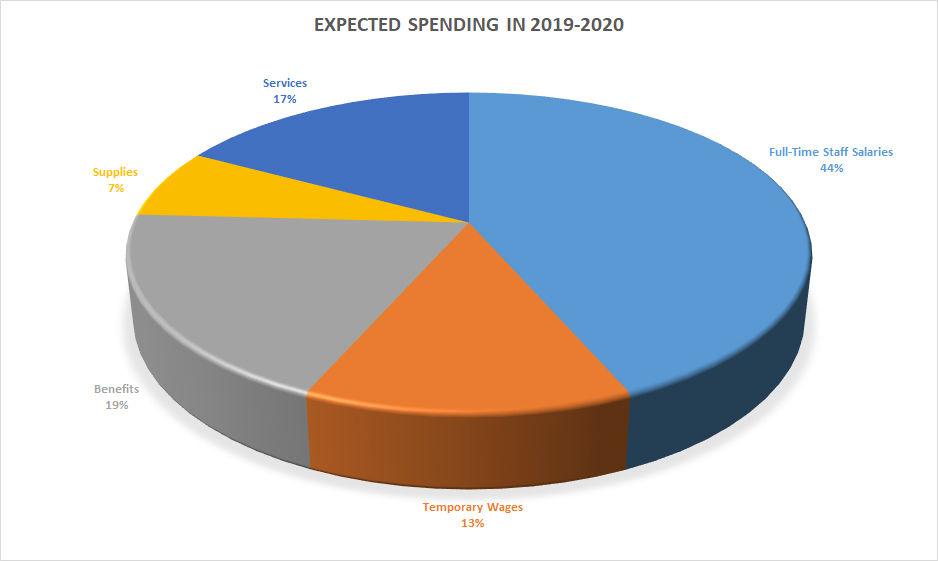NC State Student Centers collects over $100 per student in student fees every year to pay for operating costs, with the majority going toward Talley Student Union and staff members’ salaries.
Tim Hogan, director of University Student Centers, said his department has three main sources of funding, the first being student fees.
According to the Student Services website, Student Centers receives $132.39 from full-time students to cover operating costs. According to student fee summary documents, $100.39 of this toward the Campus Enterprises category, which supports operation costs and is set to generate just under $3 million for Hogan’s department in the 2019-20 academic year. This is by far the largest source of revenue, according to Student Centers’ budgets.
Hogan said the second source of funding is known as retail revenue, which is charged to groups seeking to use Student Centers’ rooms. Retail revenue is also accumulated when larger events are put on.
“If we rent the ballroom to an external organization, and they pay a fee, that would be a retail revenue,” Hogan said. “If the complexity of your event as a student organization is such that you want lots of A/V equipment, and we need staffing to run that equipment, that cost we’ll pass on to you.”
The last major funding source comes from the state, Hogan said.
“The third portion, we get a minor amount of state-appropriated dollars to help support usage of the student centers for departments and we provide some event support to a few event spaces in Hunt Library,” Hogan said. “For us to do that, we’re provided state-appropriated dollars to fund that, so we don’t spend student fee dollars to support events at Hunt.”
Hogan said the student fee allows Student Centers to provide services like room reservations at no cost to student organizations.
“If you think about a weekly meeting in a meeting room for a student organization or department, there’s really no cost at all,” Hogan said.
Costs associated with running Student Centers are primarily salaries and benefits, Hogan said. According to Student Centers’ budgets, the department is expecting to pay almost $1.3 million in full-time staff salaries during the 2019-20 academic year, with benefits for full-time staff totaling about $570,000. In addition, temporary salaries, which Hogan said are primarily for students, are about $390,000.
Non-personnel costs make up a smaller portion of costs. Student Centers is budgeted to spend around $285,000 for utilities, meaning electricity, natural gas and water. Over $500,000 is projected to be spent on telephone, internet, video and other communication services. Around $209,000 is allocated toward paying for office supplies, food products, computer software, janitorial supplies and some computer equipment.
Hogan said Student Centers is careful to section off student fee, retail and state-appropriated revenues.
“We do that specifically to make sure that we maintain the integrity of the student fee that we collect,” Hogan said. “We want to make sure that the student fee we collect provides the most support to the Student Centers’ operation.”
Student Centers also helps run events at other locations on campus, but because of how strictly funding is organized, none of those events are fee-funded, Hogan said.
“We also provide some support at Park Alumni Center and the Lonnie Poole Golf Course,” Hogan said. “Those fall completely into the retail environment. We charge money for services there, and that pays for us to help provide support there.”
According to Student Centers’ budgets, the only locations supported by student fees are Talley Student Union and Witherspoon Student Center. As of December 2019, Talley’s revenue sits at just under $2 million, with $1.65 million coming from student fees, and Witherspoon Student Center’s revenue is approximately $450,000, with just over $410,000 coming from fees. Revenues not associated with the two locations sit at about $480,000. As Hogan said, none of this comes from student fees.
Overall, Hogan is confident in the budget and believes the department is managing student fees responsibly.
“The expenditures are a little bit less than last year,” Hogan said. “Revenue is just a little bit more, expenditures just a little bit less; I feel pretty good, but it’s only January. We’re halfway through the semester, and we’re in good shape.”








